Japanese rice dumplings or Dango are traditional Japanese sweets sold at street stalls and wagashi shops. Learn all about these chewy and sweet snacks and get recipes for popular dango that you can make at home.
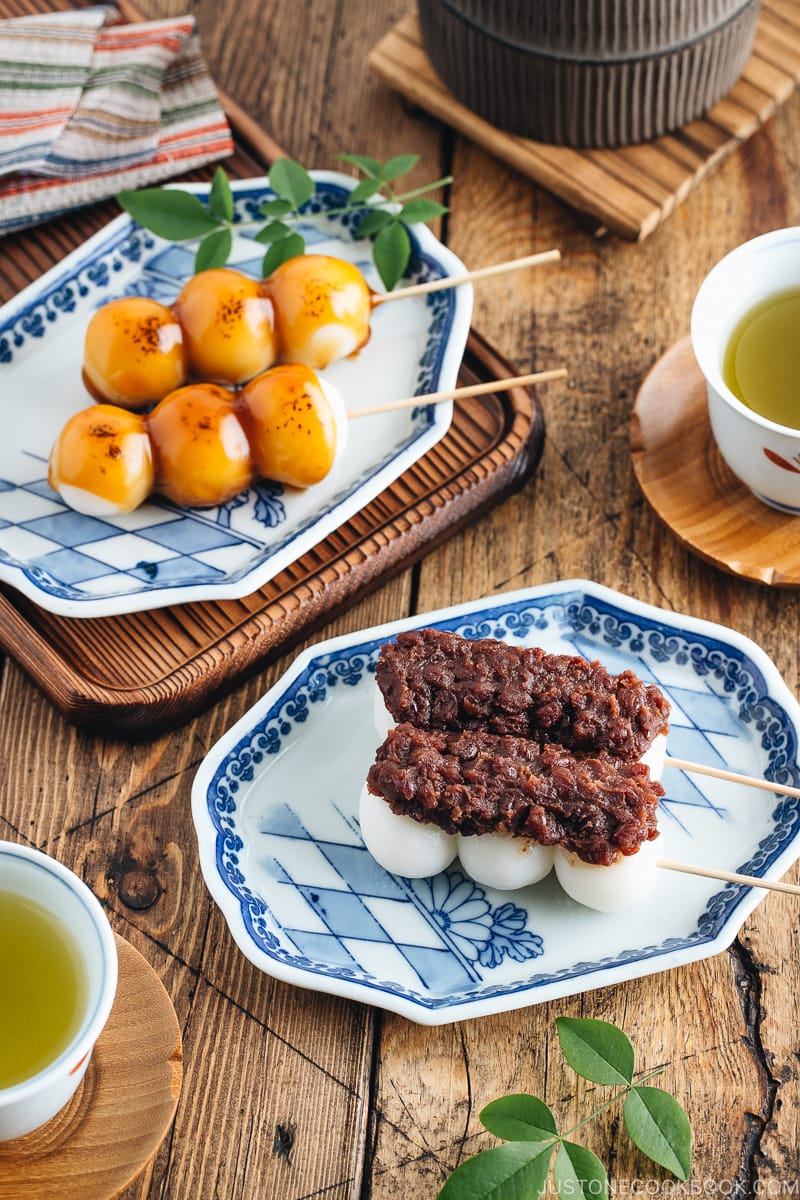
While visiting Japan, you’ll want to try dango (団子, だんご) or sticky rice balls skewered on a bamboo stick. You can find these sweet rice dumplings at street stalls, local sweet shops, and festivals. Similar to mochi, dango are chewy and addicting! They’re just as popular as other types of sweet treats in Japan.
Today, let’s get familiar with dango! I’ll also share some of my delicious dango recipes that you can make at home.
Table of Contents
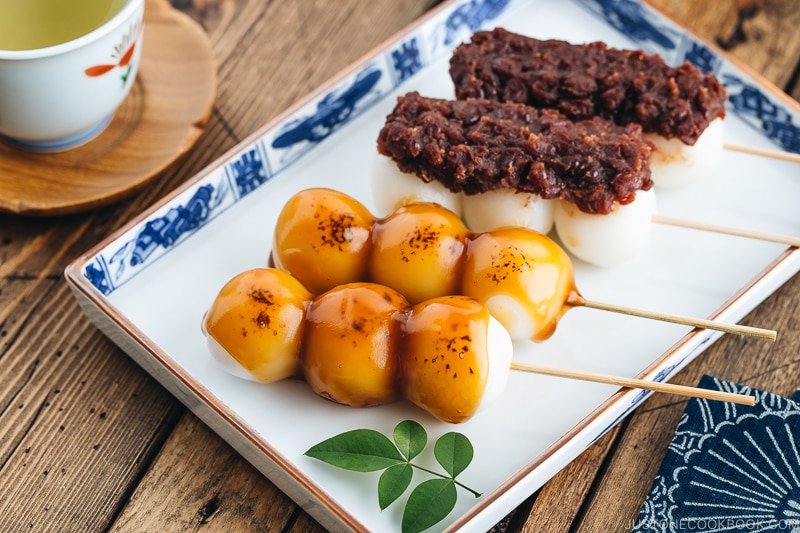
The Difference Between Dango and Mochi
You may be wondering what the difference is between dango and mochi. They are both made of glutinous rice, and you might think they are the same at first bite! Any Japanese person would tell you otherwise, though. Here are the differences (and one similarity):
1. How It’s Made
Dango is made from rice flour and while mochi is made from rice grains. For dango, we mix rice flour (often a mixture of rice flour and glutinous rice flour) with water to make a pliable dough, form it into balls, then boil them. To make mochi, we steam short-grain glutinous rice called mochigome, pound it until stretchy, and form it into different shapes.
2. Texture
Dango has a firmer and slightly springy texture so it can stay in a round ball shape. On the other hand, mochi is a lot more elastic and stretchy and can be a bit droopy and soft.
3. Presentation
The most common way of serving dango is on a skewer of 3 to 5 small, round dumplings. Mochi is usually formed into a bigger cake and stuffed with fillings or formed into a flat, round shape and coated with seasonings.
4. Flavor
Both dango and mochi are plain tasting with a mild rice flavor. That’s why they are usually coated or topped with nostalgic traditional flavors like sweet soy sauce glaze (mitarashi sauce, みたらし), sweet red bean paste (anko, あんこ), or nutty soybean powder (kinako, きな粉).
Popular Types of Dango
We have several kinds of dango in Japan, and if we include some regional specialties, the list can get quite long. Here, I will share my recipes for the most popular kinds of dango.
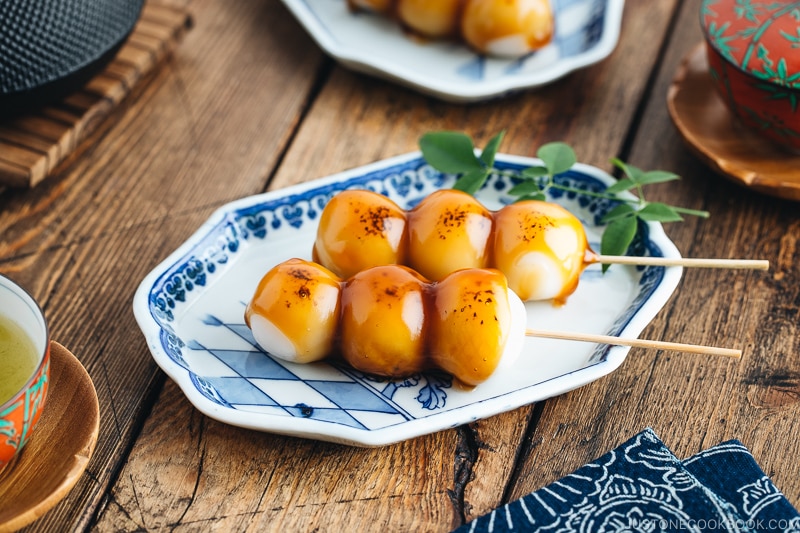
1. Mitarashi Dango
Mitarashi Dango (みたらし団子) is coated with a sweet soy sauce glaze that is thick and syrupy. This savory and sweet sauce is quite addicting and there are many fans looking for this dango at street stalls in Asakusa, traditional shopping streets, and the conbini (Japanese convenience stores). You can easily make this rice dumpling at home following my recipe.
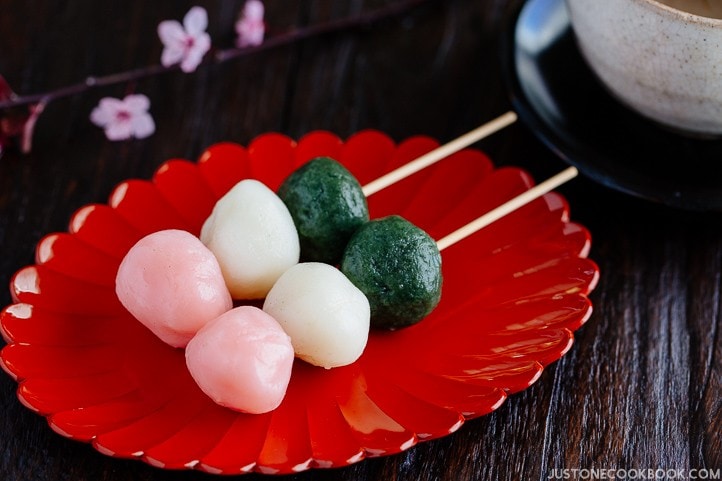
2. Hanami Dango (Sanshoku Dango)
You’ve probably seen this 🍡 emoji. This is hanami dango (花見団子), sometimes called sanshoku dango (三色団子) with pink, white, and green dango. We enjoy this popular springtime snack during cherry blossom viewing (hanami) in Japan. You can make homemade Hanami Dango with my recipe.
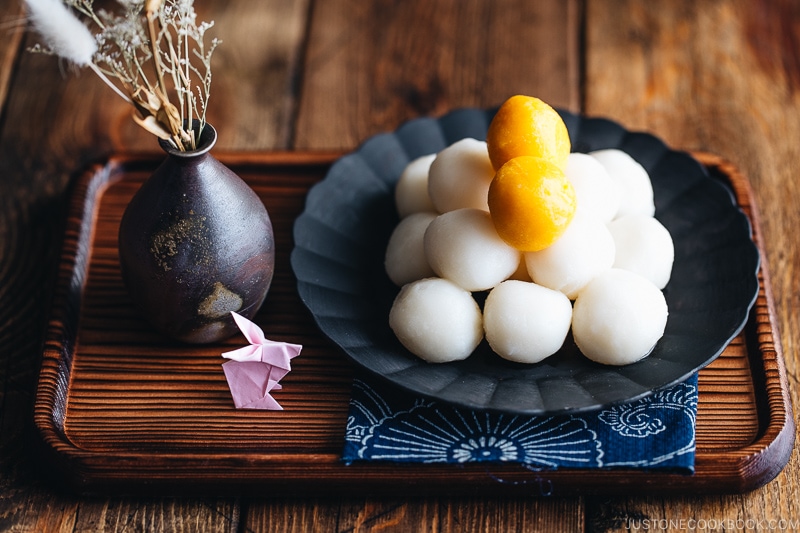
3. Tsukimi Dango
In mid-autumn, the Japanese celebrate the harvest under the full moon and marvel at the passing of the seasons. On Tsukimi(月見) – Japanese Harvest Moon Festival or Mid-Autumn Festival (中秋の名月), we enjoy Tsukimi dango (月見団子) with tea. Tsukimi dango are served plain and stacked in a pyramid arrangement of 15 rice dumplings. Celebrate Mid-Autumn Festival by making Tsukimi Dango at home!
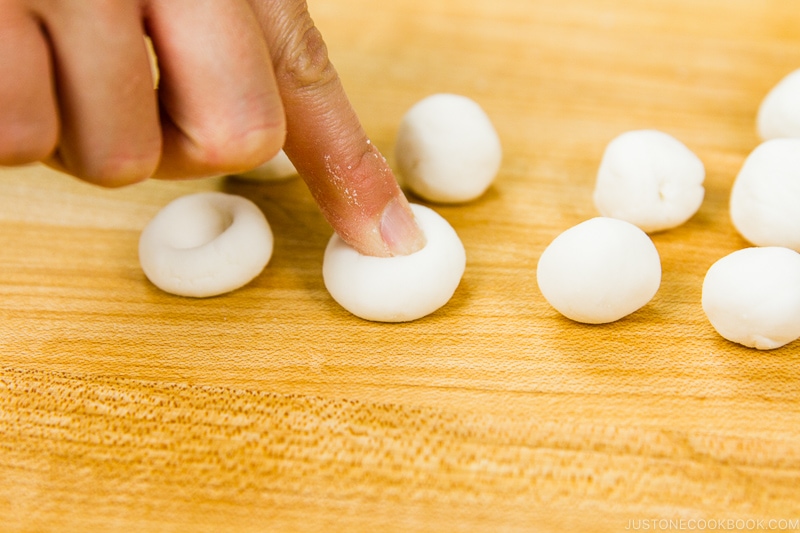
4. Shiratama Dango
Shiratama Dango (白玉団子) are soft and small with a little dimple. The flatter shape is perfect as a Japanese dessert topping and served with Oshiruko, Kakigori (shaved ice), and Anmitsu. Follow my Shiratama Dango recipe to make them at home.
5. Other Popular Varieties
- yomogi dango (よもぎ団子) — also known as kusa dango (草団子); made with Japanese mugwort
- sasa dango (笹団子) — dumplings wrapped with bamboo leaves; a specialty from the Niigata prefecture
- Kibi dango (吉備団子) — made of glutinous rice, starch, and sugar; a specialty of Okayama prefecture
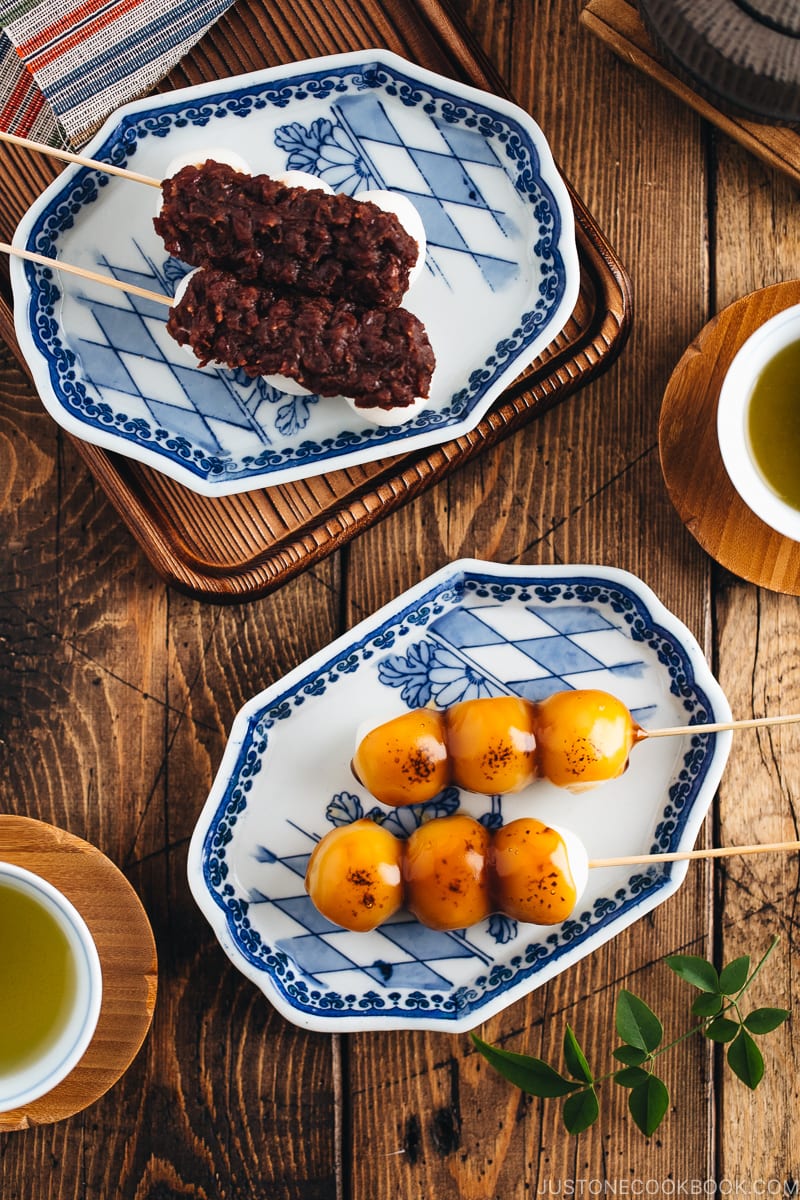
How to Make Basic Dango at Home
Making basic dango is easy, mess-free, and fail-proof! If you’re looking for a bonding activity with your kids, family, or friends, I’d recommend spending an afternoon making these delicious dumplings. It takes just 30–45 minutes. Read below for an overview on how to do it; find the full recipe in my Mitarashi Dango post.
1. Ingredients You’ll Need
- either a mix of joshinko (上新粉) + shiratamako (白玉粉) or a rice flour blend called dangoko (団子粉) — read below for more explanation of the flours
- water
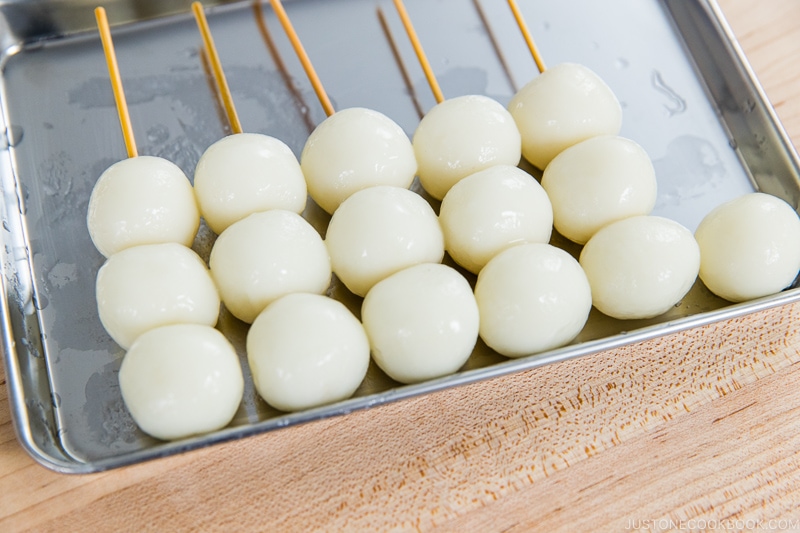
2. Five Easy Steps!
- Mix the flour and water.
- Shape into dango balls.
- Boil until tender and let cool in iced water.
- Thread the dumplings onto a bamboo skewer.
- Add the toppings of your choice.
For the detailed step-by-step instructions, see my Mitarashi Dango recipe.
3. Pick Your Toppings
- Sweet soy glaze — see my Mitarashi Dango recipe
- Sweet red bean paste (anko) — buy premade red bean paste or see my Anko recipe
- Sweet soybean flour (kinako) — buy soybean flour and mix with sugar
- Sweet matcha paste — see my Green Tea Filling (Matcha-an) recipe
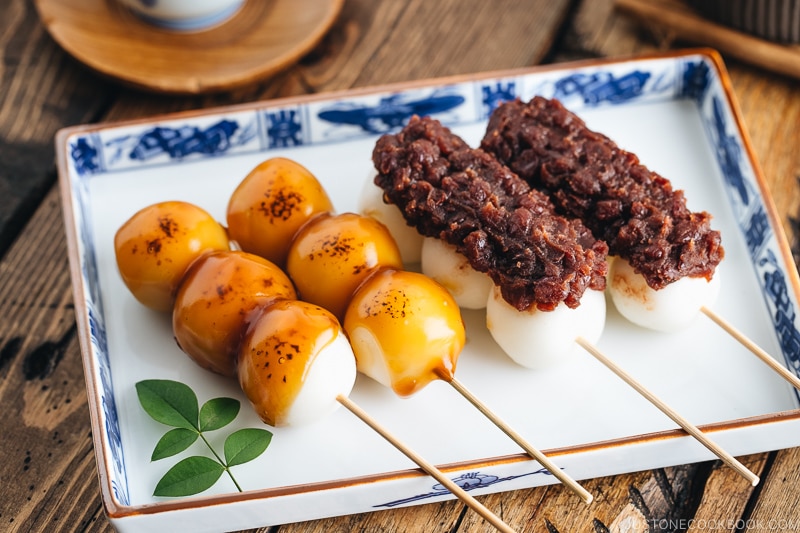
Guidelines for Making Dango Dough
- Mix joshinko (上新粉) and shiratamako (白玉粉) for a better texture than using dangoko (団子粉). Dango made with just dangoko tend to be tougher and less bouncy/elastic.
- Use a 50–50 ratio of joshinko and shiratamako. This gives you a bouncy and chewy texture that’s not too sticky and soft.
- Change the ratio for a chewy, mochi-like texture. You can decrease the joshinko to 40% and increase shiratamako to 60%.
- Do not overuse shiratamako. Otherwise, the dango will get too soft and flat.
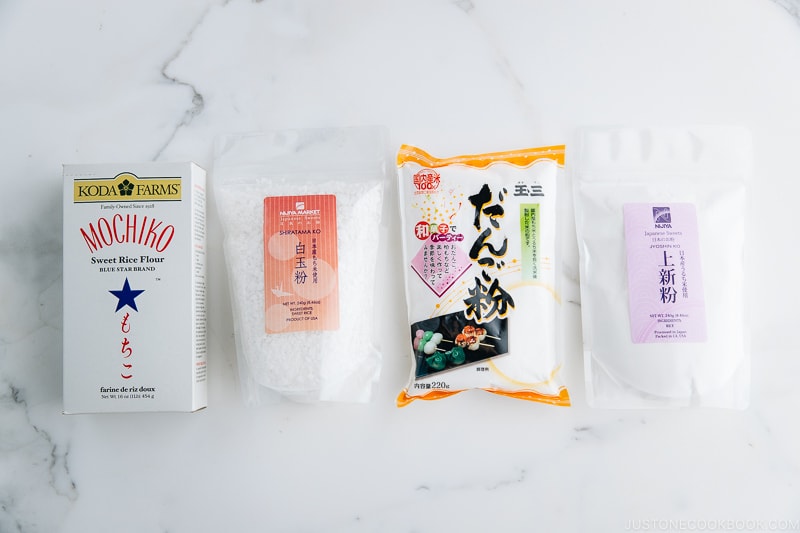
Get Familiar with Different Rice Flours
The textures of Japanese mochi sweets (mochi-gashi 餅菓子) like dango, Daifuku Mochi, Kashiwa Mochi, and Sakura Mochi are different from one another because of the type of rice flour used. Below are the short-grain rice flours and glutinous rice flours that we have in Japan. See them pictured above from left to right:
- Mochiko (餅粉): A glutinous rice flour similar to shiratamako but produced differently. Mochiko produces a very soft and tender dough texture. It’s good for gyuhi (those “mochi” toppings for frozen yogurt) and daifuku, but not for dango.
- Shiratamako (白玉粉): A glutinous rice flour that’s most commonly used in Japanese households to make “mochi” sweets like Daifuku Mochi.
- Dangoko (団子粉): A combination of rice flour and glutinous rice flour. It’s made specifically for dango, but I feel the texture is on the tougher side due to a higher rice flour ratio in the mix. See my recommendation below for making dango dough.
- Joshinko (上新粉): A type of rice flour. The texture of “mochi” made with this flour is less chewy and elastic due to the absence of glutinous rice.
You can find Japanese rice flours at your local Japanese grocery store or maybe on Amazon. Please note that the rice used is different from other Asian rice varieties.
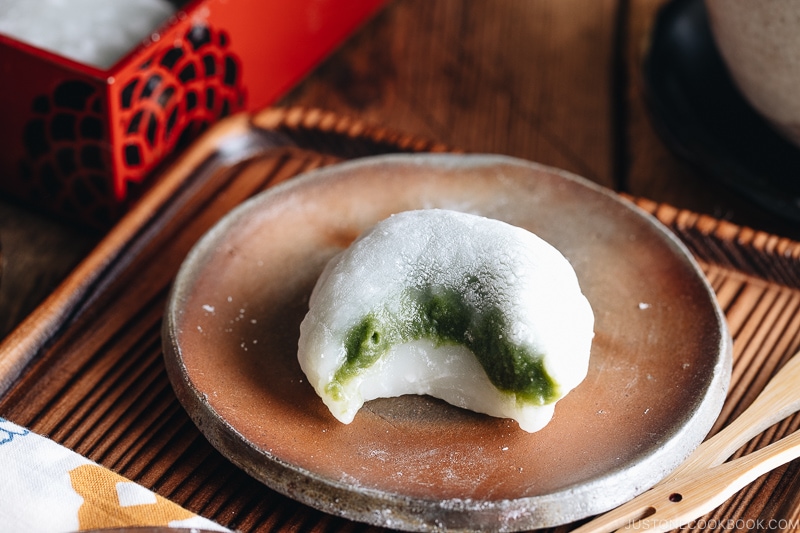
With the popularity of mochi sweets overseas, I hope these ingredients will be widely available in the future so everyone can make different types of mochi at home.
Wish to learn more about Japanese cooking? Sign up for our free newsletter to receive cooking tips & recipe updates! And stay in touch with me on Facebook, Pinterest, YouTube, and Instagram.
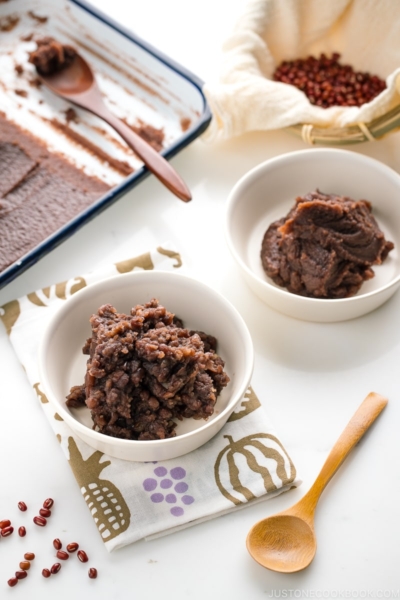
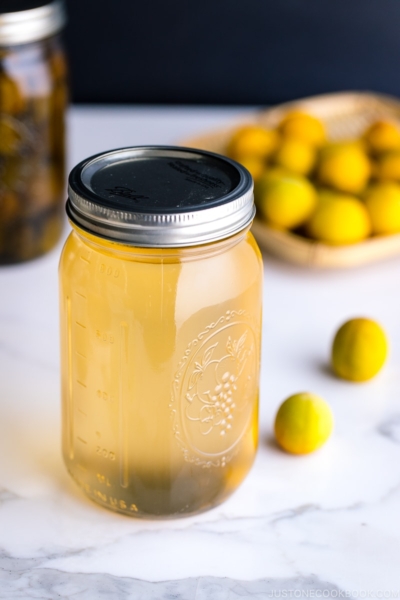
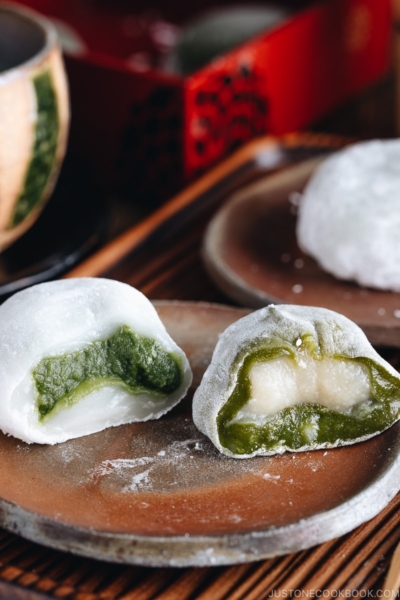
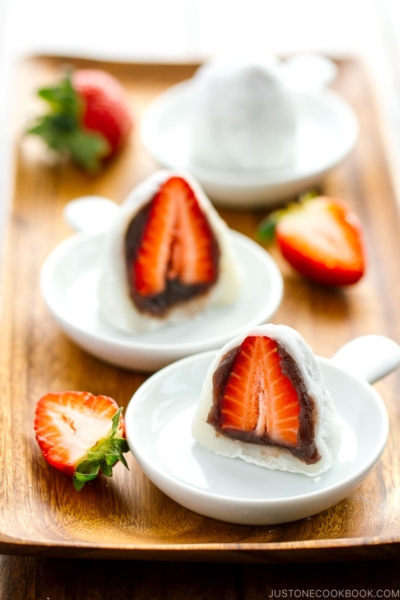




Which flour category would Bob’s Red Mill Sweet Rice Flour be considered? Here is a link to the product I’m referring to: https://www.bobsredmill.com/sweet-white-rice-flour.html — The information on the page says you can make mochi and that it’s made from glutinous rice. But, which category would this be — mochiko, shiratamako, etc.? I’ve made dango successfully before, but only using the (pictured) Koda Farms Mochiko.
Hi Olivia! Thank you so much for reading Nami’s post and trying her recipe.
The one from Bob’s Red Mill is Mochiko. More information regarding the differences between Mochiko and Shiratamako can be found in this post:https://www.justonecookbook.com/mochiko/
We hope this helps!
Thank you very much! That’s exactly what I needed to know. 🙂
You’re welcome, Olivia!🤗
I always wondered if dango was supposed to be eaten, cold, hot or room temp. I would see some in refrigerated sections of Asian grocery stores here in New York, but was never sure how to eat them. I did not want to make a mistake, or perhaps not enjoy them because I ate them wrong! 🤣
Hi Kayla! Thank you for reading Nami’s post!
To enjoy the delicious Dango, the room Temperature is the best.🙂 The Dango gets harder if it gets very cold.
We hope this helps!
Hi, I have seen little mochi on sticks that are grilled. They looks so good! Was wondering if that is the same as dango and then grilled. Thank you.
Hi Cindy! It’s probably the Dango (same as this recipe). We called it Kushi Dango 串団子. (Dango on the stick)
We hope this helps!
Hello! What is the water : rice flour ratio? Thanks!
Hi Minnie, Thank you very much for reading Nami’s post!
Nami posted 4 kinds of Dango recipes here, and each recipe has a different ratio. Please click “my recipe” in red writing to get to each recipe page.
We hope this helps!
Hi Nami San,
So happy for this dango recipe. I was wondering if you have a recipe for a favorite Anko of mine. It’s “miso anko” usually found in Kashiwa mochi. I find the sweet salty combo irresistible. Thank you for your help!
Hi Emi! Thank you very much for reading Nami’s post and trying her recipe!
We currently don’t have a Miso Anko recipe on the website, but you can use 100 g Shiroan + 15-20 g White Miso, and mix them well to make Miso Anko.
We hope this helps!
how do you make mugwort dango? do mugworts have a recipe to them?
Hi Kim! Nami has a Yomogi (mugwort) Dango recipe inside this Hanami Dango recipe:https://www.justonecookbook.com/hanami-dango/
Enjoy!🤗
Nice to see a fellow Nihonjin making actual recipes not adaptations by westerners etc. Btw just let others know that most Japanese Americans in Hawaii and California are no different than those in Japan I used to live for near 20yrs in Hawaii and CA and we all made mochi and dango at the same time or the same occasions Hawaii is a bit easier to get things as it has a large Japanese community imo its a lot like Japan there. But sadly my family pretty (my family is 100% Japanese so no citizenship or culture shock probems lol ) much hate living in the US so we are soon moving back home.
Thanks for keeping it real Nami san! ガンバッテ!
Hi Yuki,
Thank you for sharing your input!
My kids read Momotaro and wish to try Kibi dungo. I am not sure you have that recipe? I can not find it.
Thank you very much🙂
Hi Chutima! Kibi dango is made of glutinous millet. I actually don’t know how to make it from scratch…
https://www.kurashiru.com/recipes/e3c5080f-7488-4084-9c01-04f06ffc461b
This is just one of the recipes shared on internet….
Hi Nami,
My son loves Dango, especially with red bean paste. The question I have is which would be best to use to make it. I’ve read the description of the different types of flour that are posted but for some reason, I don’t know which is better. The Shiratamako, Dangoko, or Johshinko. Can you please help me.
Thank you
Christine
Hi Christine! It really depends on you. I wrote in the blog post: For making dango, I recommend mixing both Joshinko (上新粉) and Shiratamako (白玉粉), which, I believe, will make a better dango texture than using Dangoko (団子粉). Dango made with just Dangoko tend to be tougher and less bouncy/elastic.
Hope that helps!
Dear Nami,
I read at wikipedia that kibi dango are made from millet (which sounds really tasty to me, added with a nice sauce, hmmm). Are there two tipes or preparemodes of kibi dango? If you know a non-sweet recipe for a using in a main meal of the one made from millet, please let us know (well even a sweet one would be alright, can imagine it tastes great with honey).
I personally love millet and it’s full of iron, ideal for us women. And if it’s Namis Japanese Recipe it sure is really tasty
Hi Anna! I am sorry to disappoint you but I’m not sure how to make them. I’ve seen some Japenese recipes online on how to make Takakibiko (some sort of millet flour I think), but I have never made it so I’m not too sure… 🙁
Here’s one I found: https://recipe.organic-press.com/recipe_144/
(Use chrome to translate to English)
ah this are some bad news. But I guess that they’re not going to last long, because in one of the latest One Piece Anime Episodes they were eating them! So I guess a lot of people worldwide are going to be interested in recipes 😉
Thank you for the recipe and all your effort! I’m going to try it next time I need a new kitchen experiment experience
It looks like a lot of people learn about Japanese food through anime. 🙂
What is the brown topping lying atop the dango in several of the pictures (next to the mitarashi dango)?
Hi DrRandy! It’s Anko (sweet red bean paste): https://www.justonecookbook.com/how-to-make-anko-red-bean-paste/